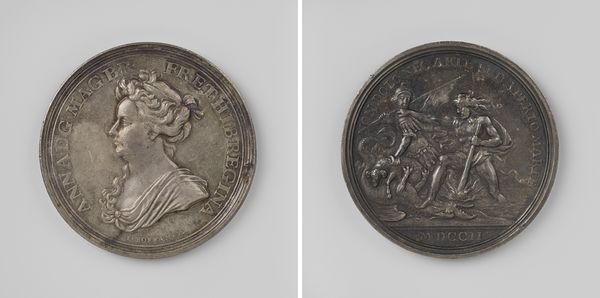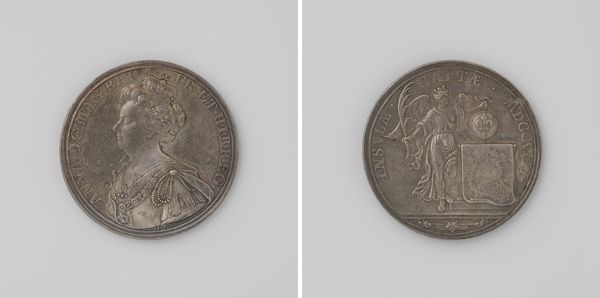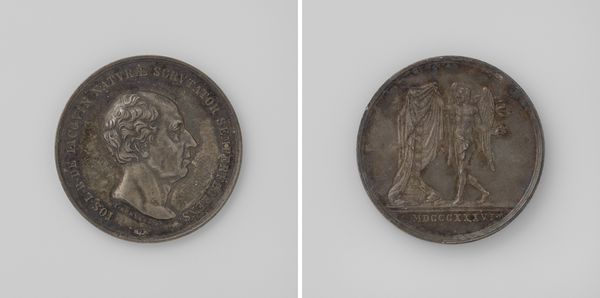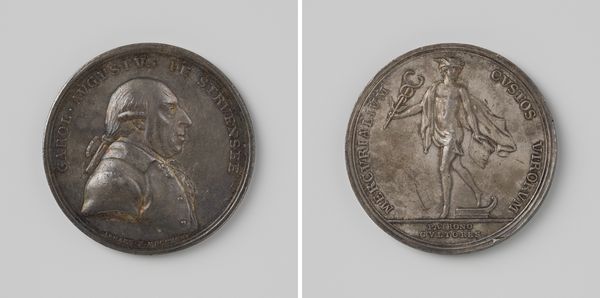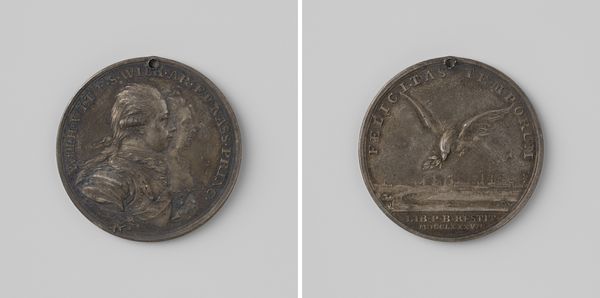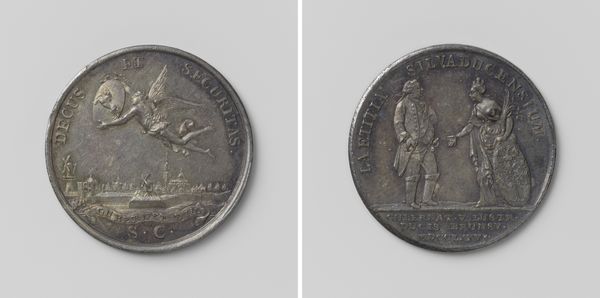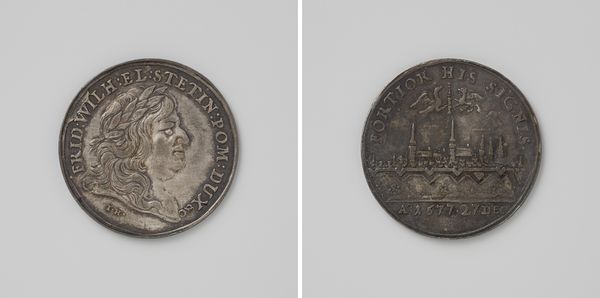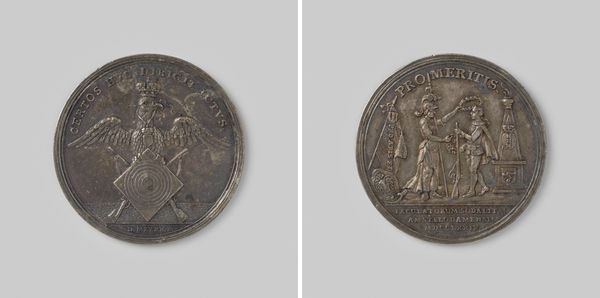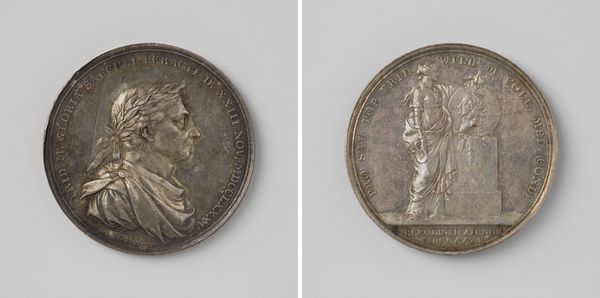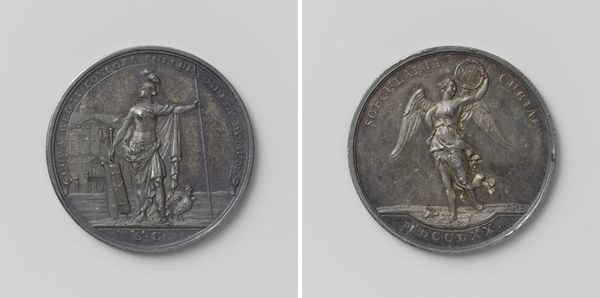
Maria Christina en Albert-Kasimir hersteld als landvoogden der zuidelijke Nederlanden 1791
0:00
0:00
Dimensions: diameter 3.5 cm, weight 16.92 gr
Copyright: Rijks Museum: Open Domain
Curator: At first glance, it has a neoclassical simplicity, but with baroque ornamentation still visible. What are we looking at here? Editor: This is a medal from 1791. Its full title is "Maria Christina en Albert-Kasimir hersteld als landvoogden der zuidelijke Nederlanden," which translates to Maria Christina and Albert Casimir Restored as Governors of the Southern Netherlands. It is sculpted in metal, showcasing a relief on either side. Curator: "Restored," as if their position were threatened? This piece feels like an exercise in shoring up power. Editor: Exactly. The historical context is key. They were reinstated after a period of unrest in the Austrian Netherlands. Note the symbolic weight carried by the female figure labeled "Laetitia Publica" or Public Happiness. The laurel wreath signifies peace and triumph, a not-so-subtle message of regained stability. Curator: But the classical idealism is undercut, or rather complicated by the specific portraiture on the reverse side, these very particular people who clearly wanted to project themselves as authoritative. Editor: The inscription encircling their effigies further solidifies that message: "Marchio. Avst. Alb. Cas. Saxo. Dvxb. Belg. Pr." Archduke Albert Casimir, Duke of Saxe-Teschen, Governor of Belgium. It is all very deliberately rendered to assert their renewed reign. Curator: Indeed. Consider the crispness of the portraits juxtaposed against the more allegorical and idealistic depiction on the obverse, each choice creates a powerful message on how they wanted to be remembered. Editor: The play of light across the metal's surface adds depth, too, subtly highlighting the details of their faces and clothing and directing the viewer's focus precisely where intended. There are these incredible tiny details worked into the design itself, a lot to admire from this medium alone. Curator: This artwork allows us to consider the historical impact of propaganda. It seems intended to project this narrative onto the population but lacks popular uprising. It seems like more of an attempt by those in charge to say “We’re in charge still” regardless of their subject's perspective. Editor: Precisely, viewing through a formal lens allows us to appreciate the artistic strategies deployed, while situating it historically lets us dissect the power dynamics at play and what they were projecting to the public. Curator: This has left me pondering the many layers embedded within it. Editor: As for me, I’m now considering other medals and other metal sculptural works from the time. Thank you for this enriching analysis!
Comments
No comments
Be the first to comment and join the conversation on the ultimate creative platform.

